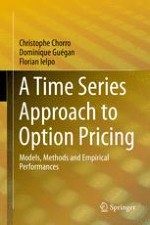2015 | OriginalPaper | Buchkapitel
4. Empirical Performances of Discrete Time Series Models
verfasst von : Christophe Chorro, Dominique Guégan, Florian Ielpo
Erschienen in: A Time Series Approach to Option Pricing
Verlag: Springer Berlin Heidelberg
Aktivieren Sie unsere intelligente Suche, um passende Fachinhalte oder Patente zu finden.
Wählen Sie Textabschnitte aus um mit Künstlicher Intelligenz passenden Patente zu finden. powered by
Markieren Sie Textabschnitte, um KI-gestützt weitere passende Inhalte zu finden. powered by
